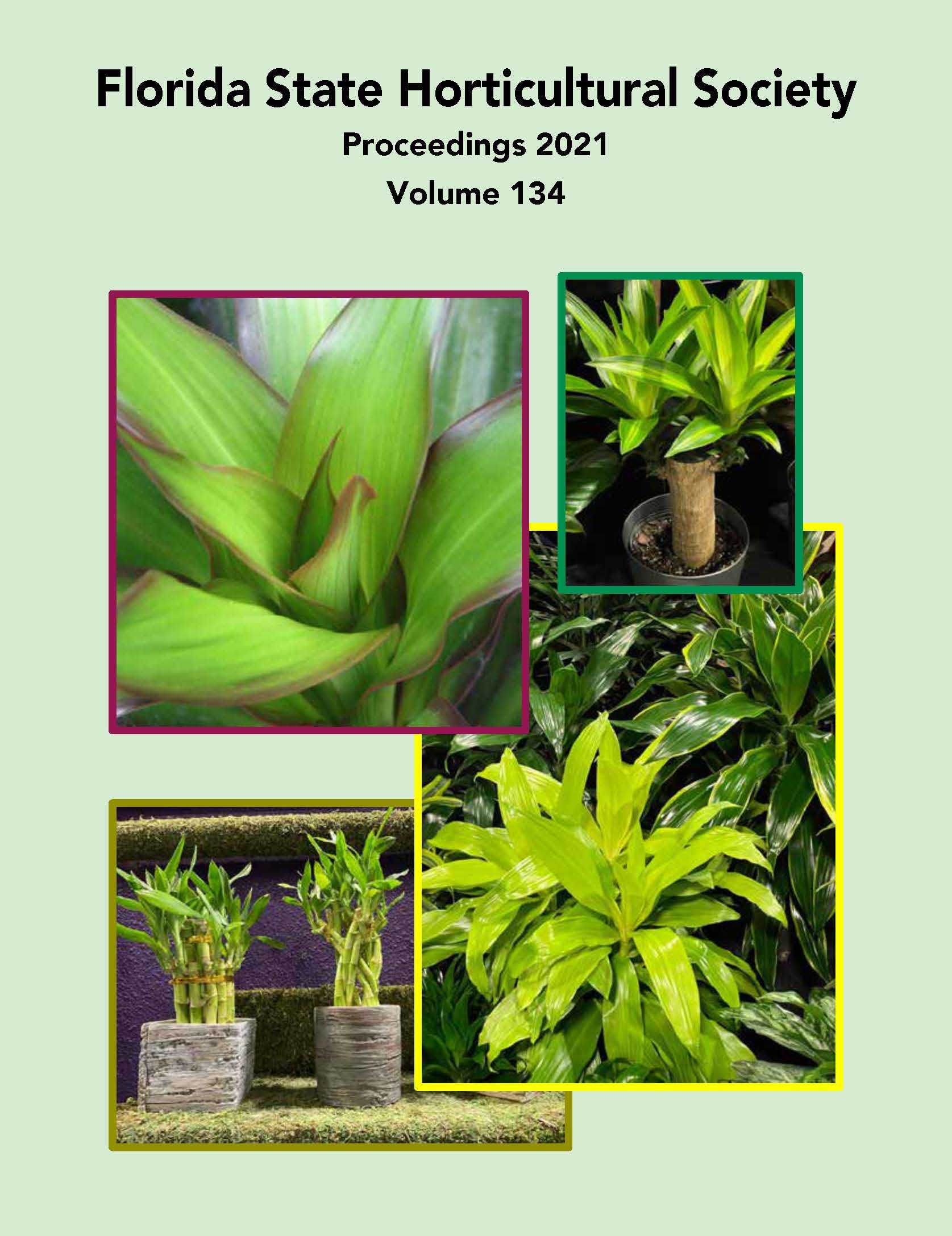Abstract
Internal discoloration (“cutting black” or “corte negro”) is a physiological disorder of mango fruit that may be induced preharvest but is expressed postharvest. Corte negro is characterized by diffuse brown or gray-to-black flesh discoloration in partially ripe to ripe fruit. It has been observed in all common mango cultivars imported to the United States from Mexico, Central America, and South America. We conducted trials over three or four seasons depending on location at two farms in Ecuador with ‘Tommy Atkins’ and ‘Ataulfo’ (‘Honey’) and two farms in Peru with ‘Kent’ mangos; a single trial with ‘Honey’ mangos at a third farm in Peru with a history of corte negro was included in the fourth year. We tested the hypothesis that mangos become predisposed to develop corte negro symptoms at some critical period of fruit development due to low calcium (Ca) and/or high nitrogen (N). We further tested the hypothesis that corte negro symptoms develop in response to stress from either the United States Department of Agriculture, Animal and Plant Inspection Service (USDA APHIS) phytosanitary hot water treatment or postharvest chilling temperature (storage at 10 °C versus 24 °C). Our attempts to either induce or prevent induction of corte negro by manipulating N and Ca application rates had no effect on the incidence of corte negro. However, we established that corte negro occurred almost exclusively in fruit from refrigerated storage (three weeks at 10°C plus one week at 24 °C) with no difference among fertilizer treatments.

